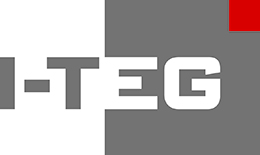
Benchmarking
Comparison of products, processes and services
There is no question that buildings are becoming more and more comfortable and safe, and that they offer optimum conditions for the people working in them and for visitors. However, this comfort has resulted in a steady increase in costs. TGA planners have therefore been paying increasing attention to cost control for some time now. To this end, various methods and procedures are used. One of them is benchmarking.
What is benchmarking?
The word is derived from the English language, where it is called benchmarking. This means roughly comparing benchmarks. Benchmarking is used in many areas. Benchmarking is not about technical issues, but rather about determining the value of products, processes and services by comparison, and thus calculating costs as accurately as possible. Benchmarking in the field of technical building equipment is part of facility management.
It is applied to the following costs:
- Project design costs
- Building construction (planning and construction)
- Building occupancy costs
- Renovation costs
- Building exploitation costs
Benchmarking is a continuous process that is operated over the entire life cycle of the building.
What are the goals of benchmarking?
In benchmarking, comparisons are made and the results are analysed and evaluated. The goal of benchmarking is to make the operation of the building as efficient as possible and thus save costs.
Good benchmarking is characterised by 3 criteria:
- Objectivity
- Validity
- Reliability
Special programmes are used for benchmarking. There are also specially developed benchmarking tables. The aim of benchmarking is not the comparison as such, but the implementation of measures to make the operation of the building more efficient. In this way a large amount of costs can be saved over the life cycle of the building with relatively little effort.
Advantages and disadvantages of benchmarking in comparison to a calculation of the costs of use
Benchmarking can be carried out much faster because less data has to be collected. The comparative data are of good quality. Benchmarking is very well suited for cost optimization of inventory.
The disadvantages of the procedure are that only a comparison with statistical data is carried out. To use it, it is necessary to adjust the comparative data. The different cost types are partly unclear.
For these reasons, benchmarking is more suitable for existing buildings. For new buildings, on the other hand, the much more complex calculation of exploitation costs is recommended.
How does benchmarking work for existing properties?
In the first step, the actual costs of the building are recorded and documented. This is followed by the recording of reference values and the plausibility check. These two processes are evaluated and used to form the key figures. Based on the key figures, the key figure report is created, which at the same time is used as the basis for the building profile.
This is followed by a comparison with the market key figures and the final result is the optimization report, which contains recommendations for the building owner and/or operator of the building.
On the basis of the determined key figures, a multi-year analysis can be prepared, which can show a forecast cost development up to 10 years in advance.


